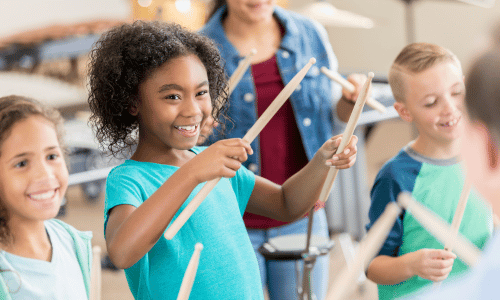
15 May Why You Shouldn’t Sacrifice Your Child’s Education in the Arts
Many parents are forgoing an emphasis on their children’s education in the arts in favor of STEM-related subjects. It’s not uncommon today for students to be enrolled in extracurricular “kids coding” classes, as opposed to music or art lessons. In the past few years, we’ve seen a dramatic boom in the number and interest in afterschool classes that teach children the basics of coding, technology, and game design and development.
And for good reason: Parents are worried that their kids might not be able to get a job unless they plan to enter the technology field as a designer, coder, or developer. I can empathize with this sentiment, as it is a bit alarming how many jobs are starting to be eliminated and automated in our current workforce. It makes you wonder what type of labor we are going to need in the future.
But there are some things that technology and automation will never be able to do, such as relating to people face-to-face on a human level. Effective and meaningful interpersonal communication are relationships built on empathy, compassion, and feelings of mutual connection. And these sentiments arise from the human experience. Automated bots and processes might be able to imitate these human qualities, but they aren’t able to genuinely create them.
And it’s that combination of effective interpersonal, interaction skills and critical, empathetic thinking that will give children an edge in the workforce of the future. But with the pervasiveness of virtual and technologically-mediated interactions today, how and when are children developing these skills? How often do they get to practice collaborating, communicating, and empathizing with other kids in hands-on, real-life scenarios? Especially as compared to how much time they spend in front of screens?
Possibilities and Limitations
Technology has opened a world of possibilities for us. And one of the biggest possibilities is our ability to communicate and interact with anyone anywhere in the world. But these interactions are inherently limited by their very virtual and mediated nature.
Not that being able to communicate through technology is a bad thing. It’s obvious now more than ever that our children will need to know how to interact through social media and other online platforms in the future. But mediated communication often downplays some of the most important, yet subtle, indicators of effective human interaction, such as eye contact, body language, tone of voice, and so forth. We all know how easy it is to misunderstand a text or email due to its one-dimensional nature. And with voice-only communication, such as a phone conference, you miss out on crucial body language indicators.
Real-world, three-dimensional communication, where you can see, hear, and interact with a live person, has a lot of telltale, yet subtle, signals and rituals that can’t be learned any other way except through immersive cultural experience and practice.
Why the Arts are More Important Now Than Ever Before
And here begins my advocacy on the importance and crucial relevance of children’s education and participation in the arts today. Because the arts offer a particularly advantageous platform for children to develop highly desirable interpersonal skills in collaboration, leadership, and communication.
Participating in the arts is inherently hands-on, community-oriented, and interactive. It’s genuine, realistic, and focused interaction and communication. It’s an unobtrusive, immersive experience where kids can hone their interpersonal skills through fun, play-based learning with their friends. And because it’s fun, these skills will stick with them in the long run.
It seems to me that participation in the arts is more critical now than ever before. Because the arts can help us stay connected to the unique experience of what it really means to be human. And because participation in the arts can strengthen our abilities to communicate and interact with others effectively. That ability to effectively communicate with others will give children an edge in securing a place in the workforce of the future.





No Comments